One-Eye Lens: What Do You Need To Know?

In today’s world, we wear contact lenses which have now become a significant part of our everyday lives. Sandwiched into the fashion genre, medical line, sports, or even for entertainment purposes, it’s hard to say anyone hasn’t heard of someone wearing one contact lens or lenses.
But what about when someone wears only one contact lens? How many times have you seen that happen?
The funny thing about contact lenses is that many people who go about their normal daily lives might be on just one contact lens.
This is not because they have lost one piece or forgot to wear a regular contact lens in the other eye. The need to wear just one contact lens springs from a prescription from the eye doctor.
So today, we’ll be looking into the one-eye contact lens, why it is needed, some effects, and how to know if you need (or do not need) to wear one contact in. If you are set to learn about this, then jump right in!
The Reason for Wearing Contacts in One Eye Only.
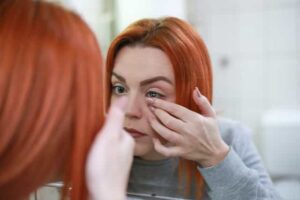 As mentioned briefly earlier in the introduction, there is a valid reason for wearing one contact lenses. If you are familiar with going to the eye doctor, you will notice that most prescription calls result in your two eyes having different readings.
As mentioned briefly earlier in the introduction, there is a valid reason for wearing one contact lenses. If you are familiar with going to the eye doctor, you will notice that most prescription calls result in your two eyes having different readings.
While they could be close, having the same defect of the same level in both eyes is rare. In such cases, you’d usually require multifocal or bifocal contact lenses.
However, there are some situations where one eye is completely void of any need to be corrected. That is, there is no need for corrective vision options or procedures. In that case, only the eye that needs vision correction will require contact lenses.
Eye Defects That Call For Only One Lens.
A few vision problems would require the patient to wear one contact lens instead of the usual two.
 One Eye Emmetropia:
One Eye Emmetropia:
This is a situation whereby one of the eyes needs no vision correction. However, the second eye might have a defect that needs to be corrected.
Some possible defects include slightly blurred vision or complete blurry vision, distance vision, when the person experience vision loss symptoms, distorted vision, near vision, problems with depth perception, and so on.
The eye that does needs corrective vision methods is called the dominant eye.
Slightly Defected Vision Correction:
In this case, the two eye does need correction. But one is more defective than the other. During this kind of situation, the eye doctor usually prescribes for the patient to remove the contact lens temporarily from the eye that is only slightly defective.
What Are the Effects of Wearing One Contact Lens?
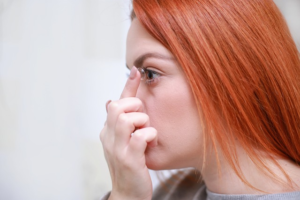
As easy as it might seem wearing a single contact lens, there are some things you might want to know about the eyes and how they’d react to the different level of protection.
But before we proceed, you might want to know that the covered eye is called the dominant or protected eye. Whereas the eye with no corrective vision lens is called the unprotected eye.
Here are two things that could happen when you wear only one lens.
- Remember that you only have one protected and one unprotected eye because the unprotected eye didn’t need correction. Well, when you begin to wear just one lens, you might start to feel all the defects move into the unprotected eye. Things like blurry vision, near vision, and even problems with depth perception could start to seep in and disrupt the formally clear distance vision.
- Also, your brain might face some issues interpreting and balancing both eye statuses for the right coordination. If your dominant eye is receiving treatment for distance vision with a distance correction lens, the second eye might start having issues with the near vision.
So what can you do to keep both your eye in good condition, despite wearing one contact lens?
Contact Lenses With Reading Glasses
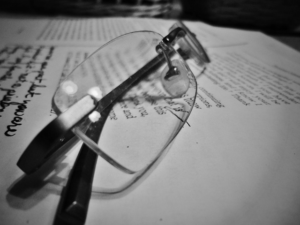
One thing you can do is to merge contact lenses with reading glasses. When it comes to any activity with up-close vision, the brain would need to work more with the two eyes. Therefore, keeping your other eye protected from the strain would be best.
However, don’t try to treat yourself with glasses. Remember that you would still need to pay attention to each lens’s proper vision correction power.
That is why it is preferable to visit a doctor for accurate readings and regular contact lens fitting so that you can end up with the best glasses that can give you an almost-natural vision.
Monovision Contact Lenses
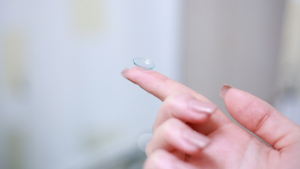
Monovision contact lenses fit the dominant eye with a far vision contact lens and the other eye with a compact vision contact lens.
If a prescription is not required for distance, a single contact lens for near could be used. This may appear an unusual strategy, yet it works quite effectively.
If you use monovision contact lenses, you can get clearer eyesight with a monovision contact lens. You should adjust quickly. The lens is designed for the single-vision eye and is cheaper than multi-spot contact lenses.
Check some of our ontact lenses:

Acuvue Oasys 12 contact lenses
Order ACUVUE OASYS 12 contact lenses without a prescription verification
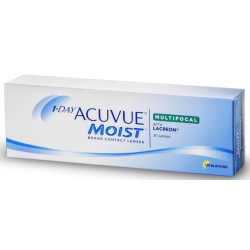
1-DAY ACUVUE® MOIST MULTIFOCAL
Order 1-DAY ACUVUE® MOIST MULTIFOCAL without prescription 1-DAY ACUVUE® MOIST MULTIFOCAL contact lens is a new one-day cont...
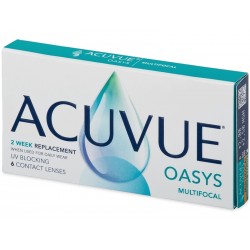
Acuvue Oasys Multifocal 6 pack contact lenses
Struggling with presbyopia, making reading difficult? Our two-week ACUVUE® OASYS MULTIFOCAL contact lenses are designed for ...
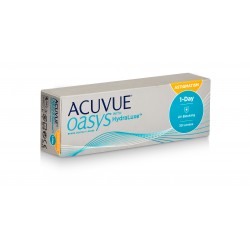
ACUVUE® OASYS 1-DAY for ASTIGMATISM 30 contact lenses
ACUVUE® OASYS 1-Day for ASTIGMATISM are advanced, one-day use contact lenses designed for those with astigmatism. They ensur...
Summary
If you have a visual problem in only one eye, you are not forced to wear glasses with varied thicknesses of eyeglass lenses.
You can successfully rectify it with a lens in one eye that is invisible to others and does not interfere with the brain’s production of different-sized images from each eye.
Of course, for the chosen lens to be correct and safe, it must be adjusted under the supervision of an expert.
Be sure to check our offer of contacts without prescription!
See also:






